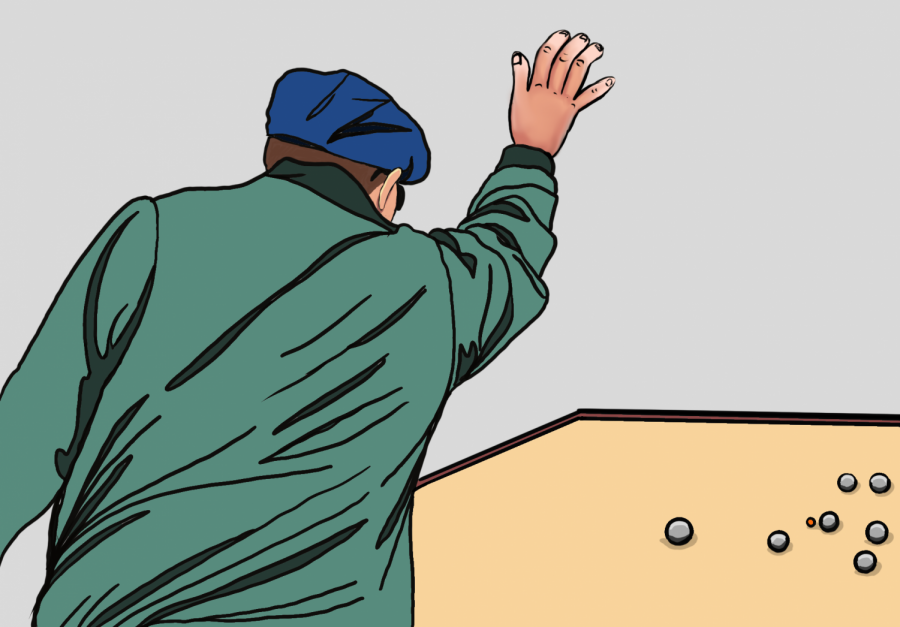Elbow, Apple, Carpet, Saddle, Bubble. If you have ever suspected that you had a head injury, chances are you have been asked to remember these five words and repeat them to test your immediate memory. I was asked to repeat these words in the Varsity Athletics Training Room after sustaining a concussion at swim practice.
What exactly is a concussion? While it is widely believed that you need to lose consciousness in order to have a concussion, this is not true.
“Most people don’t lose consciousness when they receive a concussion. In fact, losing consciousness is a sign of a very serious head injury,” said Head Athletic Trainer John Eckel.
According to WebMD, “A concussion is a type of brain injury that is caused by a blow to the head or body, a fall or another injury that jars or shakes the brain inside the skull.”
One of the most common symptoms is a headache that won’t go away, but fogginess, nausea, and sensitivity to light and noise are also associated with concussions.
In my experience, having visited both the Whitman training facilities and the Welty Health Center, treatment of concussions is very inconsistent at Whitman. After a day of extreme headaches, I went to Welty to have my head checked. The nurse there asked about my symptoms and told me that I most likely had a mild concussion but that I would need to see a doctor to know for sure. Unfortunately, I would have to wait a day to have an appointment with the doctor there.
The doctor referred me to the Walla Walla Clinic for immediate diagnosis. Once there, I was told that the clinic didn’t have the facilities to deal with head injuries and that I should go to the ER. At the ER, I was told that I had a concussion and should take at least a week off swimming. Back at Welty, I was reprimanded for not remembering to ask for a doctor’s note. I wasn’t in the best state to remember anything, especially after all the running around that I had done.
These are the options offered to club and IM athletes at Whitman. Hannah Moskat, a senior IM football player, received a minor concussion and also visited the Health Center. She was asked about her symptoms and walked through orientation questions and was sent home with instructions on what not to do.
“After looking at my symptoms, the nurse told me that she could safely say that I had a concussion and I could see a doctor if I wanted to, but I didn’t need to,” said Moskat. This is now contrary to Health Center Procedure.
“We have a new policy that is that we have implemented forms and we have to evaluate the student according to this form, and, depending if we are really uncomfortable, we do not hesitate to send them to the hospital for a CAT scan,” said Nurse Ruggeri.
As a varsity athlete, I was able to also go to the Athletic Training room at my coach’s request, where I had a very different experience than I had at Welty. I was asked about my symptoms and questioned in order to determine my immediate memory and concentration capacities. This included the word test above, the day’s date, repeating numbers in reverse order, walking heel to toe and touching my nose with my eyes closed. I was told to come back every day to record my symptoms and that once those were gone I would take the impact baseline test, which all varsity athletes complete before their sports season begins their first year. I was also told not to do anything that would raise my heart rate and to avoid studying for long periods of time.
From this experience and my four years as a varsity athlete at Whitman, I have concluded that treatment for concussions at Whitman is extremely inconsistent. Concussions are fairly common among varsity athletes, and good treatment is very important.
“Every year we have about six concussions, with one from swimming and cross country, but mainly it’s soccer and basketball,” says Eckel. But many IM and Club athletes also get concussions every year and have more limited access to good treatment.
One important aspect of the treatment that varsity athletes receive is the baseline test.
“Without the baseline test, it’s hard to see where someone is at. A score of 27 is considered ‘normal,’ but if someone scores a 25, I have no way of knowing if they have a concussion or if they don’t test well on this sort of test,” says Eckel.
The number of concussions seen in IM and club athletes is much higher.
“This year we’ve only had three or four concussions, mostly from football and rugby, but in the last two years we’ve seen tens of concussions,” said Kathy Ruggeri, Welty Health Center nurse.
With a case study of three different nurses and an athletic trainer at Whitman and four different experiences, it is clear that care should become more standardized.
What can we do about the rate of concussions at Whitman? A standardized care system would be a first step.
“We’ve talked about doing baseline testing for everyone, but with that comes a cost. It already costs a lot to test all of the varsity athletes, so I really don’t think that will happen,” says Eckel.
“The student needs to know that if he has one concussion, he probably shouldn’t play for the rest of the season,” says Nurse Ruggeri.
Can you remember the words from the beginning of the article? Just checking your delayed recall concentration.










